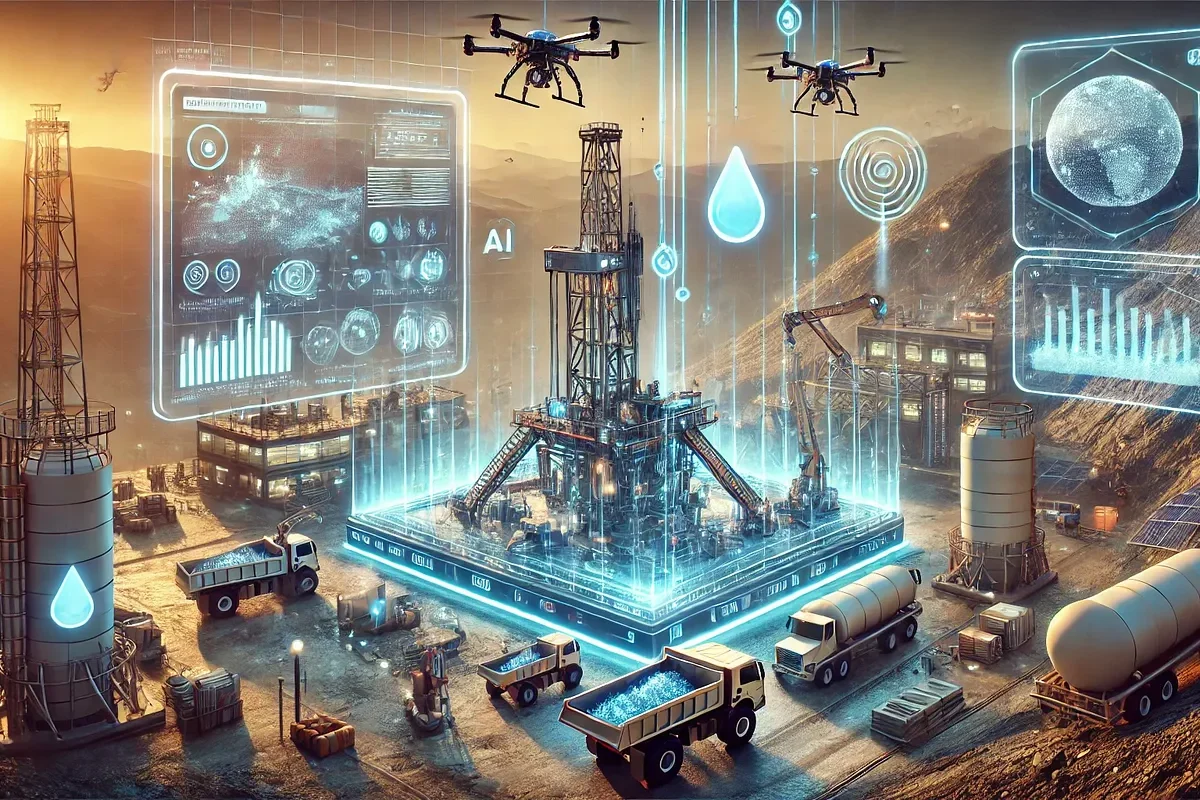The upstream sector of the oil and gas industry—comprising exploration, drilling, and production—is undergoing a significant transformation, driven by advancements in artificial intelligence (AI). Once characterized by manual data interpretation, costly trial-and-error drilling, and heavy environmental risks, the sector is now leveraging AI to boost efficiency, reduce operational costs, and improve decision-making.
1. Seismic Data Interpretation and Reservoir Modeling
One of the most impactful applications of AI in upstream operations lies in seismic data interpretation. Traditional methods of analyzing subsurface geological formations required teams of geophysicists and months of manual effort. Now, machine learning algorithms can quickly process terabytes of seismic data to identify hydrocarbon-rich formations with higher accuracy and speed.
AI-driven reservoir modeling also enables geoscientists to build more dynamic, predictive models of subsurface reservoirs. These models can simulate various extraction scenarios, helping companies optimize recovery while reducing the number of dry wells—one of the costliest outcomes in exploration.
2. Drilling Optimization
AI technologies are playing a pivotal role in real-time drilling operations. By integrating data from sensors, mud logs, bit performance, and geological surveys, AI can guide decision-making during drilling to avoid hazards, prevent non-productive time (NPT), and extend equipment life.
Predictive maintenance models powered by AI can foresee failures in drilling equipment such as blowout preventers or drill bits, allowing preemptive interventions. This not only saves millions of dollars in downtime but also improves safety on rigs.
3. Production Forecasting and Enhanced Recovery
AI is being deployed to predict production rates more accurately using historical production data, reservoir characteristics, and external factors such as pressure and temperature. These forecasts help in optimizing well performance and planning future development.
Enhanced Oil Recovery (EOR) techniques also benefit from AI. Machine learning models can determine the most effective EOR strategies by analyzing the behavior of injected gases or chemicals, maximizing recovery from mature fields.
4. Autonomous Operations and Robotics
The integration of AI with robotics is paving the way for autonomous drilling rigs and unmanned offshore platforms. AI-powered systems can perform tasks like valve inspections, leak detection, and remote repairs with minimal human intervention—especially critical in high-risk or remote environments.
Drones and autonomous underwater vehicles (AUVs) equipped with AI analytics are being used for pipeline inspections, flare monitoring, and environmental assessments, significantly improving safety and reducing human exposure to hazardous conditions.
5. Exploration Decision-Making and Investment Planning
AI is helping oil companies make better investment decisions during exploration by aggregating geological, geopolitical, environmental, and economic data. Through advanced simulations and scenario analysis, AI models can rank prospects not just by resource potential, but also by risk-adjusted returns, allowing firms to allocate capital more strategically.
6. Environmental Monitoring and Regulatory Compliance
Sustainability and ESG (Environmental, Social, Governance) compliance are increasingly central to upstream operations. AI systems can track methane emissions, monitor water usage, and detect ecological disruptions. Real-time data feeds from sensors and satellite imagery help companies stay within regulatory frameworks and mitigate environmental impacts.
Challenges and Considerations
Despite its promise, AI adoption in upstream oil and gas is not without challenges:
• Data quality and integration: Many legacy systems hold fragmented or unstructured data that must be cleaned and harmonized for effective AI use.
• Talent gap: There’s a need for professionals who understand both petroleum engineering and data science.
• Cybersecurity risks: Increased digitalization creates new vulnerabilities that must be addressed.
• Change management: Cultural resistance to automation and AI remains a hurdle in traditionally conservative engineering environments.
The Future Outlook
As oil and gas companies navigate the energy transition, AI offers a bridge between legacy hydrocarbon systems and a more digital, efficient, and cleaner energy future. By optimizing operations, minimizing environmental impact, and reducing capital risk, AI isn’t just a tool—it’s a competitive advantage.
From smart rigs to digital twins of reservoirs, the upstream sector is being redefined by AI. Those companies that embrace these technologies today will be the ones best positioned to lead the industry tomorrow.

